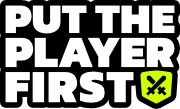Is this stealing?
Heya! It’s almost midnight and my eyelids are heavier than usual. But I wanted to type out a quick email about something important that just happened: I just wrote about one of the most popular frameworks in gamification by one of the OGs. But… I was beating myself up for writing it. Why? Because it … Read more
